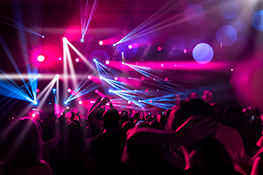Stage Lighting Secrets Revealed: Expert Tips & Techniques for Stunning Effects
Understanding the Basics: Color, Intensity, and Position
Before diving into advanced techniques, it’s crucial to grasp the fundamental elements of stage lighting. Color significantly impacts mood and atmosphere. Warm colors like amber and orange evoke feelings of comfort and intimacy, while cool colors like blue and purple create a sense of mystery or coldness. Intensity, controlled by dimmers, dictates the brightness and drama of a scene. A sudden increase in intensity can highlight a crucial moment, while a gradual fade can create a poignant transition. Finally, the position of your lights is paramount. Strategic placement can sculpt the actors’ faces, accentuate set pieces, or create dramatic shadows that enhance the storytelling. Experiment with different angles and heights to achieve the desired effect. Understanding the interplay of these three elements is the cornerstone of effective stage lighting.
Mastering Lighting Instruments: From Fresnels to LEDs
Different lighting instruments offer unique capabilities. Fresnel lenses create a soft, even wash of light, perfect for backdrops or general illumination. Ellipsoidal reflectors (LEOs) produce a sharp, focused beam, ideal for highlighting specific actors or objects. Parabolic aluminized reflector (PAR) cans deliver a powerful, wide beam suitable for large-scale effects. LED lights, with their energy efficiency and color-changing capabilities, are revolutionizing stage lighting. Learning the strengths and limitations of each instrument is essential for achieving precise and impactful lighting designs. Explore the specific features of each type – beam angle, color temperature, and focusing mechanisms – to tailor your lighting to your specific needs.
Advanced Techniques: Shaping Light and Creating Atmosphere
Moving beyond the basics, let’s explore techniques to elevate your lighting design. Go beyond simple illumination and start sculpting light. Use gobos (metal templates) to project patterns and images onto the stage, adding texture and visual interest. Color mixing allows you to create nuanced shades and transitions, enhancing the emotional depth of your production. Consider using different lighting gels to achieve specific color palettes, and learn how to blend them seamlessly for a more natural look. Employ techniques like backlighting to create silhouettes and depth, or side lighting to accentuate features and textures. Mastering these advanced techniques unlocks the potential to craft truly captivating visual experiences.
The Power of Light and Shadow: Enhancing Storytelling
Effective stage lighting isn’t just about illuminating the stage; it’s about using light and shadow to tell a story. Strategic shadow placement can create suspense, mystery, or even humor. Consider how light can be used to highlight specific characters or objects, drawing the audience’s attention to key moments. The interplay between light and darkness can shape the emotional arc of a scene, guiding the audience’s emotional response. Think about how shadows can emphasize a character’s isolation or highlight their connection to another character. Learning to utilize both light and shadow in concert is essential for enhancing the narrative impact of your stage production.
Practical Tips and Troubleshooting Common Issues
Even with careful planning, challenges can arise. Understanding how to troubleshoot common issues is essential for a smooth production. Ensure you have adequate safety precautions in place. Always check your lighting equipment before each performance. Familiarize yourself with common problems like flickering lights, blown bulbs, or faulty dimmer packs, and have a plan in place to resolve these situations quickly and efficiently. Proper cable management and a well-organized lighting plot can prevent many potential issues. Investing in high-quality equipment and regular maintenance can significantly reduce the risk of technical difficulties during a performance. Proactive planning and troubleshooting skills are as important as technical expertise.
Conclusion: Unleashing the Creative Potential of Stage Lighting
Stage lighting is more than just illumination; it’s a powerful storytelling tool. By mastering the fundamentals and exploring advanced techniques, you can transform your stage productions. Through understanding the interplay of color, intensity, and position, and by expertly utilizing different lighting instruments, you can craft stunning visual experiences that resonate deeply with your audience. Embrace experimentation, practice consistently, and let your creativity guide you in unleashing the full potential of stage lighting. Remember, the key is not just illuminating the stage but crafting a visual narrative that enhances and complements the performance.


 Auditorium Construction Services
Auditorium Construction Services 